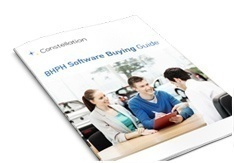Perhaps the single biggest factor on whether a customer can successfully pay off his BHPH or LHPH account with your dealership is how you structure the deal. Poor deal structure will ensure you will have collection issues throughout the loan and will significantly increase your repossession and charge-off numbers. The wrong deal structure will set your customer up for failure.
Many conventional Buy Here – Pay Here dealerships charge excessive gross profits and/or the maximum interest rate their state allows. Either of these two practices will negatively affect your ability to structure a deal your customer can complete successfully. In this article we will take a look at interest rates. In my next post I will address gross profits.
Interest Rates
One of the leading contributors to the poor image the Buy Here-Pay Here industry has experienced is due to high interest rates. Many BHPH dealerships still charge the maximum rate allowed in their state, often called the usury limit. In some states this rate can exceed 30%. Many dealers site the increased risk of dealing with BHPH customers as justification for this high rate.
Customers, however, attach a negative connotation to high interest rates. Every time a customer makes a payment on his loan, he is reminded of the high interest rate he is paying. While the customer appreciates his vehicle and the loan that made it possible, he is anxious to improve his credit so that, the next time, he can purchase a vehicle at a different dealership and pay a more competitive interest rate. His main motivation in paying on time is so he can do business somewhere else for his next purchase. No matter how good a relationship the dealership establishes with the customer, he will not choose to pay that rate again if he has any other options. High interest rates motivate your customers to buy elsewhere.
Being forced to pay an extremely high interest rate because of poor credit is also embarrassing. Customers who pay state maximum rates are unlikely to tell friends and relatives about the ‘deal’ they got. They get embarrassed if anyone asks them the rate they are paying and will probably not speak very highly of the dealership. High interest rates de-motivate your customers from referring their friends and relatives. High rates have a severely negative effect on both your repeat and referral business.
In Dealer Controlled Financing , the objective should be to charge a reasonable rate of interest, typically between 10% and 15%. The goal should be to have the amount of interest collected over the course of a year meet or slightly exceed the amount of net charge-offs for that year. Most of our dealers find charging 12% to 15% interest accomplishes this goal, but some are still charging as low as 9.9%.
The difference between charging 12% and 30% may amount to several hundred dollars but the advantage in marketing and customer retention is priceless. Advertising 10% to 12% instead of 30% is a huge competitive advantage. Prospective customer will be far more willing to pay the lower rate and will make it a point to shop the dealership with the lower rate. Customers who have obtained a loan at a reasonable rate are significantly more likely to brag about their purchase and, more importantly, to refer their friends and neighbors to your store. Additionally, they realize that they are not likely to find a better rate elsewhere and are, therefore, much more likely to return to your dealership for their next purchase. The increase in the number of sales through repeat and referral business will more than offset any interest revenue you could have obtained charging a higher rate.
A reasonable interest rate enhances your dealership’s reputation as a fair place to do business, attracts more customers and greatly improves your ability to get repeat and referral sales. Don’t let the promise of a few quick bucks by charging a high rate blind you to the greater long-term profits associated with a lower rate.
Once you have established a reasonable interest rate and a pricing policy that allows you to make sufficient gross profit to operate your dealership but not so much as to negatively affect your collections, it will be much easier to devise fair and equitable deal structures that allow your customers to succeed.



